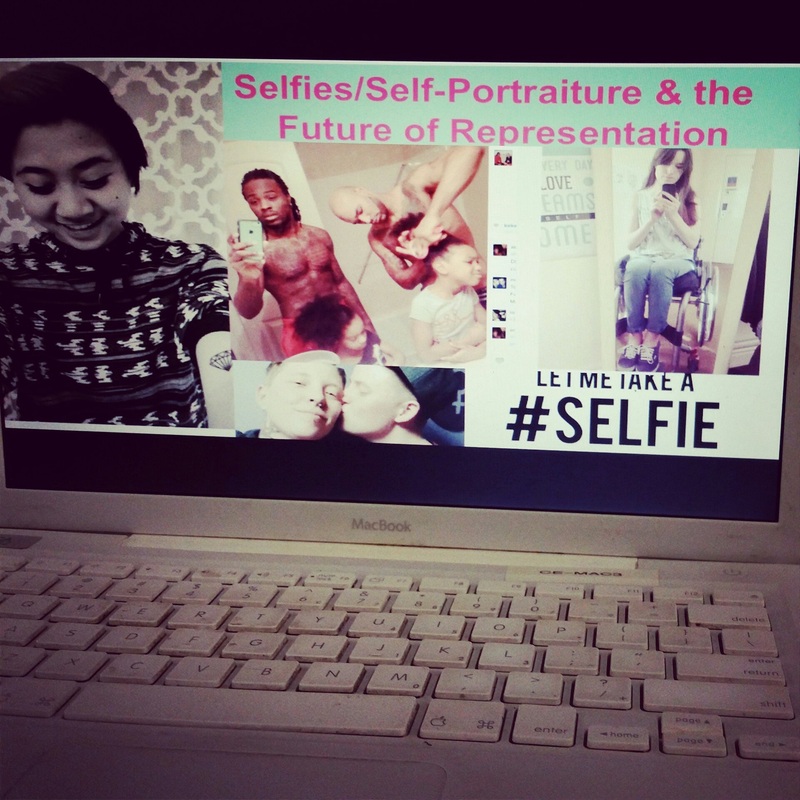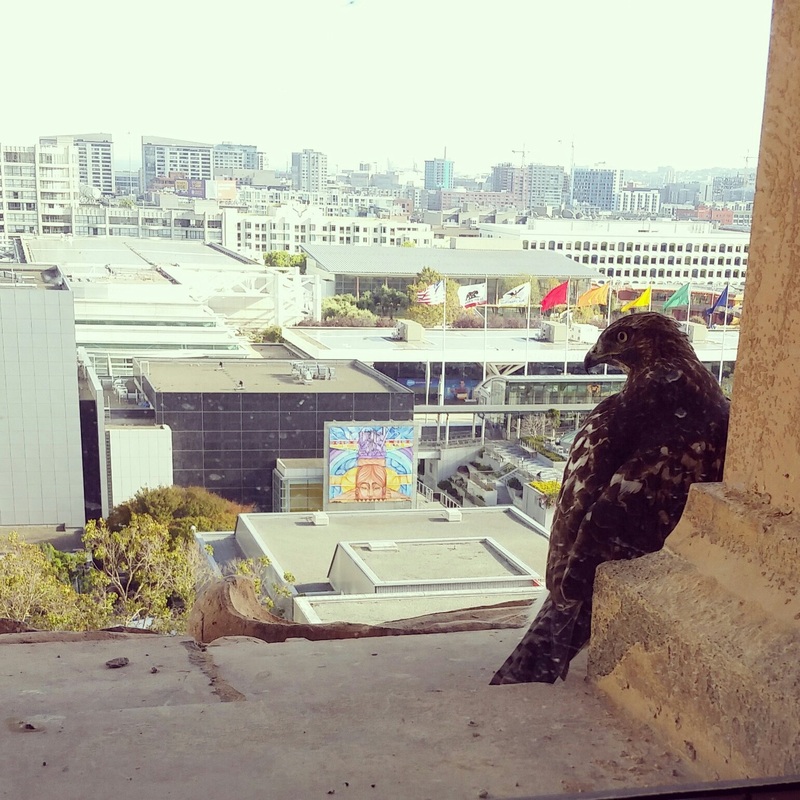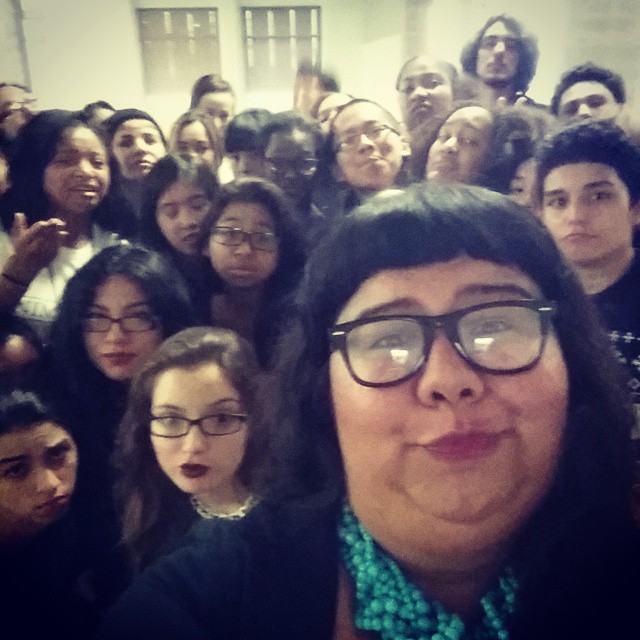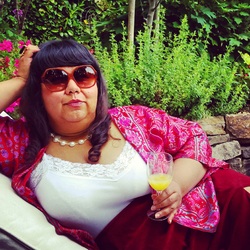|
Today I spent most of my afternoon on the 10th floor of a building in SoMa that was once Uber Headquarters. The empty office space looked like a scene from Boiler Room (that was that movie about a fake company that Vince Vaughn may or may not have been in, right?) but with gorgeous exposed brick walls (current obsession!) and an incredible view of San Francisco's downtown. As I walked around the space I thought I spotted the BIGGEST pigeon I had ever seen. It turned out it was a majestic hawk overlooking the city while perched on some lovely buttress thing! What brought me to this spot was a class I was teaching for the Yerba Buena Center for the Arts youth artists in residence program. When they approached me about doing something, I felt this calling to offer a class on selfies and portraiture in the digital age. I wanted to discuss selfie culture and all the deeply divisive stuff about selfies (is it narcissism? is it a radical form of archiving?) with the people who were actually in the middle of this conversation - teenagers.
I've worked with youth artists before and are they kinda my favorite? Yyyyeeah, they're kinda my favorite. They are deeply contemplative, often introspective and political people who are being all complex and amazing while also navigating the fascist social experiment that is high school and the whole culture is freaking out about whether they are self-obsessed, cleavage-baring cell phone addicts. When I was in high school all I wanted was for someone to make me into a teenage mom and since that dream didn't come true I settled for highly intellectual pursuits. I was, however, no one's definition of political. I was deeply conformist in so many ways. So, I admire these young artists who are at the vanguard of their cohort. I talked to them about my work, why I care about body politics, how fat and disabled and gender non-conforming folks and queer couples and people of color have taken the internet by storm with selfies and documentation of fashion, love, and everyday life. I walked them through the history of portraiture - from the wall paintings of ancient Egypt, to Rennaissance paintings filled with rich people and their identity-marking crap, to Warhol's era of celebrity-featured pop art, and to the advent of the widely available camera, when the focus of some of the most evocative and impactful images became "everyday people." I pointed them to articles about selfies by James Franco and Teen Vogue. One of the articles pointed out that nowadays the number of images of real people outnumbers the images of models. I had been warned that they might be a little quiet, but something about talking about selfies inspired them to speak up even as I was trying to sneakily move onto the next slide in my presentation. They had SO MANY AMAZING things to say about parental paranoia, the delight that selfies and potrait making brought them, how they perceived the internet as an in fact less dangerous place than the non-digital world (despite everyone's anxiety about internet pedos), the way that some of them used selfies and hashtags to create visibility and showcase identity in mostly white school environments, how the language used to describe selfies is deeply encoded with sexism, and pointed out that if cell phones with cameras had been around in the 80s the authors of most of these selfie-hater articles would have totally been taking selfies too. Too. True. Their assignment for the end of class was to take two selfies. One was prompted by the hashtag "#me," in which I encouraged them to use their cameras to tell a story about one of their identities, their politics or how they were feeling right then. They came back from the assignment with images of all kinds. One focused on armpit hair ("my armpit hair is about taking up space"). One person talked about how he took a selfie of all his hair pushed forward, covering his face because his mom didn't like that he had long hair but he did. Some people's stories were about photo bombing other people's stories, showing comfort with their silly side. One person took a picture of the holes in the soles of his shoes, and his skateboard covered in anarchist graphics as well as his own art. One person had a friend help her write "ME" on her belly, and the person who wrote "ME" wrote "NO HATE" on her hand and put it over her mouth - a symbol of her journey into trying to understand her sexuality and sexual orientation while dealing with external homophobic/queerphobic attitudes. They totally blew my mind! Just thinking about their brilliance makes me want to cry a little. Of course, we ended the session with a group selfie. I decided to stay true to my most beloved selfie style - #bitchface - because it showcases my resilience, my refusal to be polite in the face of cultural hostility, and showcasing - just in case anyone got confused - that I ain't taking shit from nobody.
2 Comments
Leave a Reply. |
Virgie Tovar
Virgie Tovar, MA is one of the nation's leading experts and lecturers on fat discrimination and body image. She is the founder of Babecamp (a 4 week online course focused on helping people break up with diet culture) and the editor of Hot & Heavy: Fierce Fat Girls on Life, Love and Fashion (Seal Press, 2012). She writes about the intersections of size, identity, sexuality and politics. See more updates on Facebook. Archives
April 2021
Categories
All
|






 RSS Feed
RSS Feed